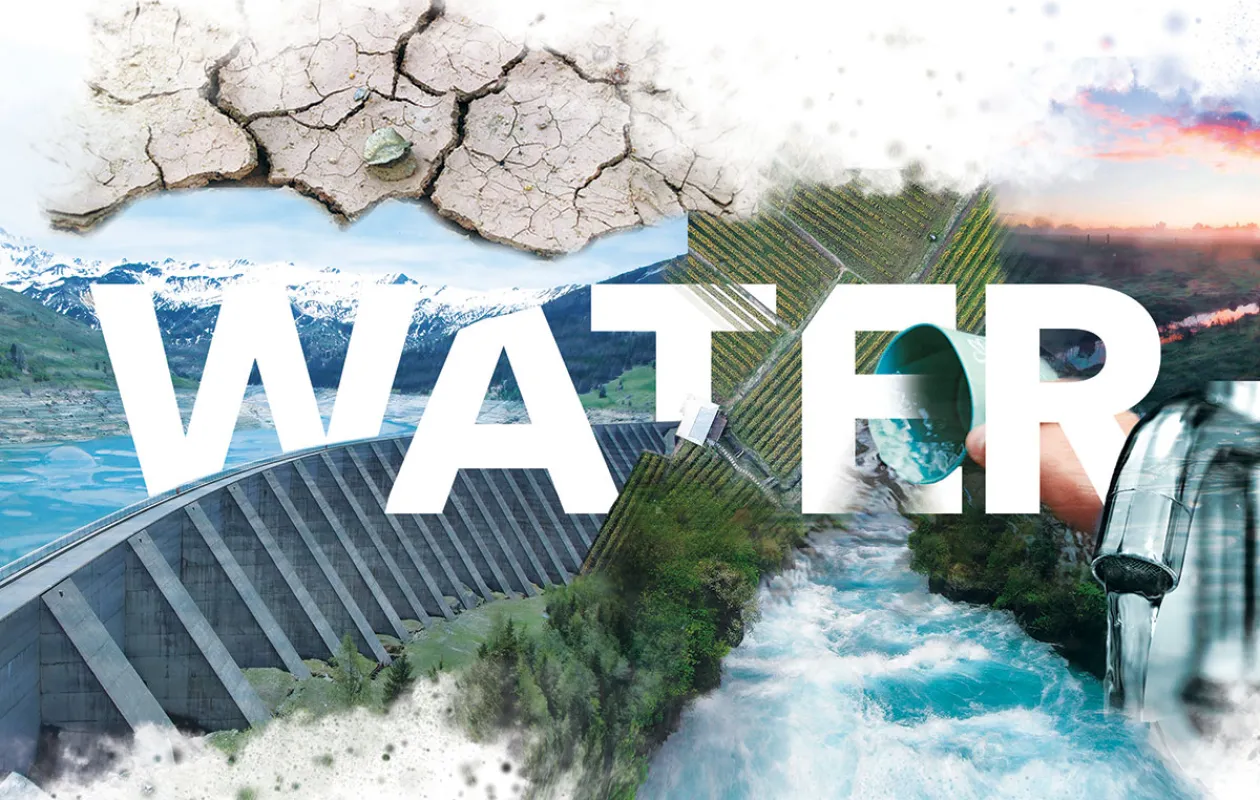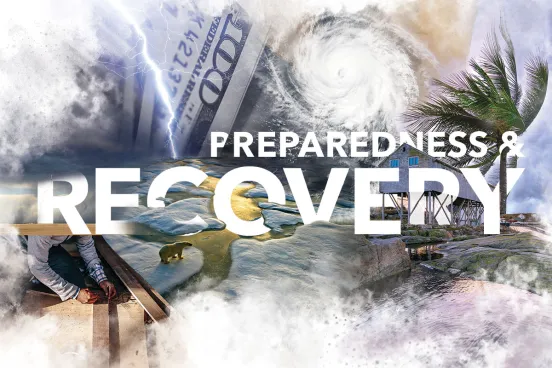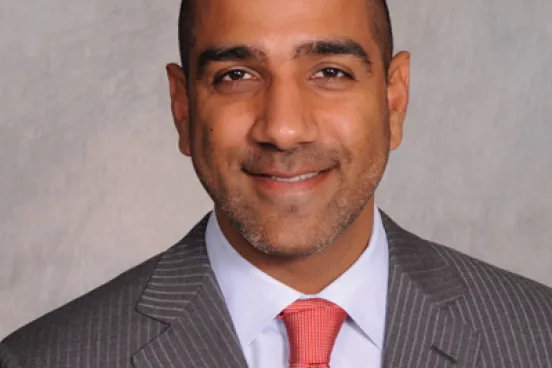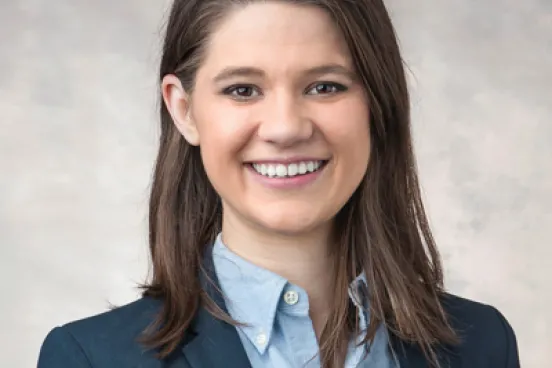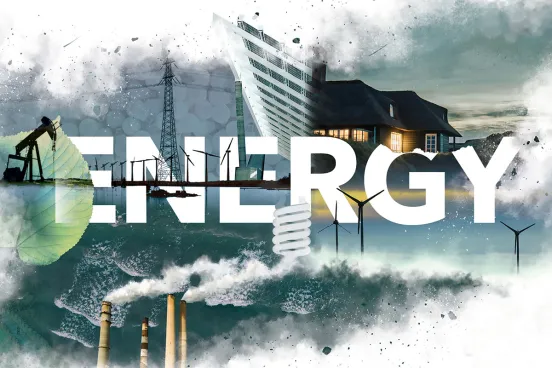The saying goes, “the writing is on the wall.” But one day in the late 1980s, in a conference room in Colorado’s state capitol building, it was on the chalkboard.
Chris Meyer, ’81, then a lawyer for the National Wildlife Federation (NWF), sat there as part of a group of dueling environmental activists and municipal water providers convened by Gov. Roy Romer to discuss the Two Forks Dam—a controversial proposal for the South Platte River near Denver.
The governor closed the doors and announced that no one would be leaving.
One by one, he called the municipal representatives to the chalkboard and asked each to write their projection of their city’s future water needs. At first, no one knew what Romer was up to. But it soon became apparent, Meyer says, that the sum total far exceeded the amount of water in the entire state.
“No one was thinking holistically about the needs of the region. Every city was positioning itself to grab enough water to ensure that it—not its neighbor—would be the biggest water provider. Largely as a result of that exercise, the justification for the dam collapsed.”
Reed Benson, ’88, University of New Mexico School of Law“When it comes to water, the world has changed a lot, but the law hasn’t kept up.”
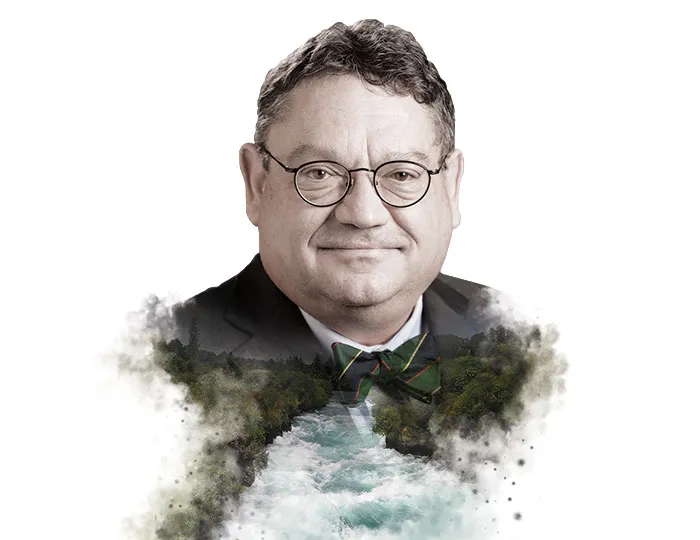
Increased demand, increased scarcity
Thirty years later, the South Platte River remains undammed, and people continue to grapple with how to reconcile increased demand for water with increasing scarcity. The debate has high stakes. Seven of the top 10 fastest-growing U.S. cities on Forbes’s 2018 list lie west of the Mississippi River. California’s Central Valley produces two-thirds of the nation’s produce, and relies heavily on irrigation to do so. And a 2014 Arizona State University study estimates that the Colorado River alone supports $1.4 trillion in annual economic activity and 16 million jobs in seven states.
But water is not just a western problem.
Florida sued Georgia over water rights in a case recently decided by the U.S. Supreme Court. More than 25 percent of South Carolina was under drought conditions in 2015. The City of Waukesha, Wisconsin, made headlines in 2016 with its successful bid to divert water from Lake Michigan because of contaminationto the city’s water supply—despite opposition from environmentalists concerned about the integrity of the Great Lakes.
“The focus is shifting—slowly—to regional planning and cooperative efforts to squeeze more efficient use out of a limited resource,” says Meyer, a partner at Givens Pursley LLP in Boise, Idaho, which holds the top spot on that Forbes fastest-growing list.
He also serves on the board of advisers to the National Judicial College’s Dividing the Waters program. “Back in the day, it seemed we could simply build our way to plentiful water. Now there is a glimmer of recognition that the easy projects are done; we can’t afford to make more water. Like all limited resources, market forces will most efficiently allocate water, and an efficient market will incentivize more efficient use of water. But it must be tempered by sound regulatory oversight that channels those forces productively, avoids social disruption, and protects environmental values.”
Meyer is a water rights lawyer who mostly represents municipalities, along with a mix of other water users and environmental entities. He also helped to draft legislation that allows Idaho cities to obtain water rights to meet long-term future needs without speculation.
“In Idaho, you can’t sell future-needs water rights. We took the incentive out of water hoarding,” says Meyer.
While state laws like the one Meyer had a hand in drafting in Idaho are helpful, Reed Benson, ’88, says the decentralization of water policy exacerbates water conflicts. Benson spent the early part of his career at the Environmental Protection Agency and as legal counsel at WaterWatch of Oregon and the Land and Water Fund of the Rockies in Colorado.
Now he is a professor at the University of New Mexico School of Law, where he concentrates on water law and environmental issues facing the West. Part of his work focuses on what climate change means for water policy and management, and how the region can adapt while lessening its impact.
“One problem is that so much water policy is left to the states, and not all western states accept climate change, politically.”
Benson has written about and testified before Congress about the U.S. Bureau of Reclamation (USBR), part of the Department of the Interior, which operates many of the big dams in the West. He sees the Bureau as a potential key player in helping the region adapt.
“[The Bureau of] Reclamation needs to take a really forward-looking view of how projects could be operated in a way that addresses the impacts of climate change, and how it can provide the best mix of benefits resulting from dams’ storage and release of water.”
The plans that the USBR uses to operate some of its dams are more than 50 years old, and Benson has argued that the public, including stakeholders and scientists, should be involved in considering how to adapt reservoirs as one way to cope with climate change.
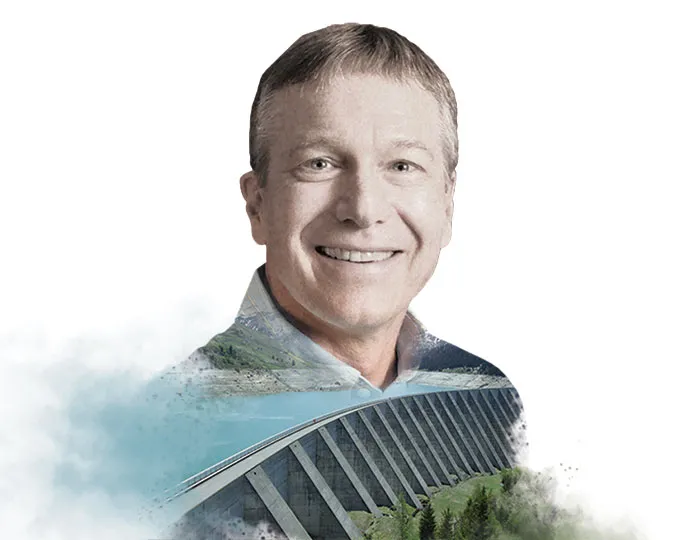
Antiquated laws for rapidly evolving problems
Benson says one of the most surprising aspects of water law is how little it has changed during his time in practice and the academe.
“Most state water codes in the West are about a century old. At the federal level, most of the environmental laws haven’t changed in decades, and the Clean Water Act was last amended more than 30 years ago. One of the big challenges in this field is using old laws to manage problems they weren’t designed to address.”
Even when constrained by existing laws, Meyer believes that in some cases, the challenges surrounding water rights can be reconciled through cooperative efforts. “Compromise is essential to success. Purists on both sides can bask in their purity, but rarely get anything accomplished on the ground,” says Meyer.
At Givens Pursley, Meyer represented the City of Boise’s municipal water provider, which sought a new appropriation of water out of the Boise River. Environmental groups opposed the plan, and Meyer brought the parties together. His client agreed to honor a subsequently established instream-flow water right to protect minimum flows.
“Suddenly, everybody’s happy,” Meyer says. “We could have litigated and won because, as the senior user, my client had no obligation to subordinate to anyone. But my client agreed that accommodating legitimate community concerns about the effect on the fish population was the right thing to do.”
Increasingly, municipalities are turning to long-term planning, efficiency improvements, and reuse to address fluctuation in water supply and increasing stress on water quality. Old-school physical solutions like dams aren’t necessarily the best answer.
“There are many opportunities for creative thinking that use engineers as much as lawyers. Lawyers are better tasked to help implement new, more complex uses and reuses of water, rather than fighting over what exists,” says Meyer.
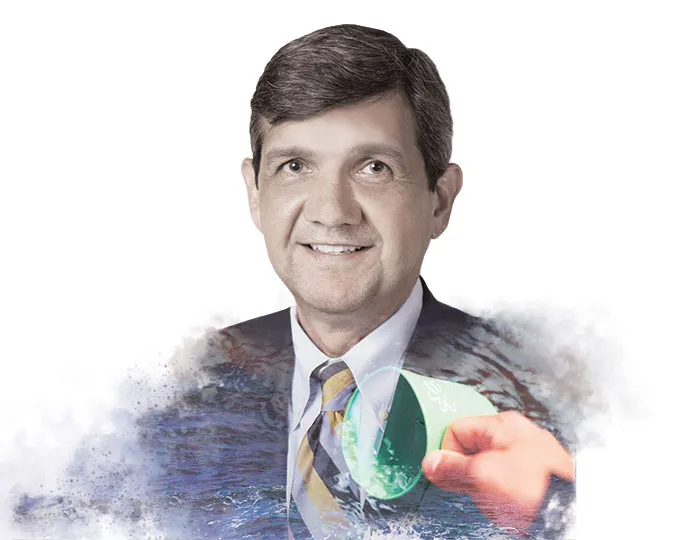
How corporate America can help
Companies are seeing increased efficiency in water treatment and delivery as an important way to conserve the resource, says Gary Ballesteros, ’88, vice president, law, as well as ombudsman at Rockwell Automation, based in Milwaukee. The company’s customers include a number of large utilities who use the company’s technology to purify and provide safe drinking water around the world.
Rockwell Automation’s technology also is powering desalination plants that can turn salt water into drinkable water—an idea that is gaining traction as an abatement to the increased scarcity of fresh water. One such plant is the Soreq Desalination Project, located south of Tel Aviv, which will provide 10 percent of Israel’s drinking water and about 20 percent of its total domestic water. Another is on the north shore of the River Thames, in England.
Beyond making the business case for customers’ bottom lines, Ballesteros says that Rockwell Automation started to push the environmental benefits of its products in the early 2000s.
“Our customers were asking more questions about environmental impact, and we realized we should talk more about the fact that when you buy our equipment, you’ll use less energy and emit less greenhouse gases. That you can apply our equipment to cleaning water and processing water faster, at a higher volume, and more efficiently. And that in so doing, we can do a lot to clean up the environment and impact climate change—just simply by doing what we do well, which is to bring engineering expertise to big, thorny problems.”
It also demonstrates that business cares about Planet Earth, too, says Ballesteros, whose volunteerism includes serving as the corporate representative on the Milwaukee Water Council and chairing the board of directors of the Alliance for the Great Lakes.
“With environmentalism, there’s this belief that the good guys work for the Sierra Club and the bad guys work for corporate America. I’m not completely naïve to the basis for the belief in this dichotomy, but I reject it. By working inside the system, you can ensure that decisions are made and implemented in an environmentally responsible way.”
Ballesteros has taught water law at Marquette University and the University of Wisconsin, Milwaukee, and he was part of the task force that drafted the Great Lakes Compact—an interstate cooperative that was created in 2008 to manage the water supply of the basin that contains 90 percent of the country’s fresh surface water.
“Many of us in the Great Lakes region view them as vast and endless, and never able to dry up. But as water is becoming more scarce around the world, more covetous eyes are focused on them. It will test the legal teeth of the Great Lakes Compact in the decades to come.”


